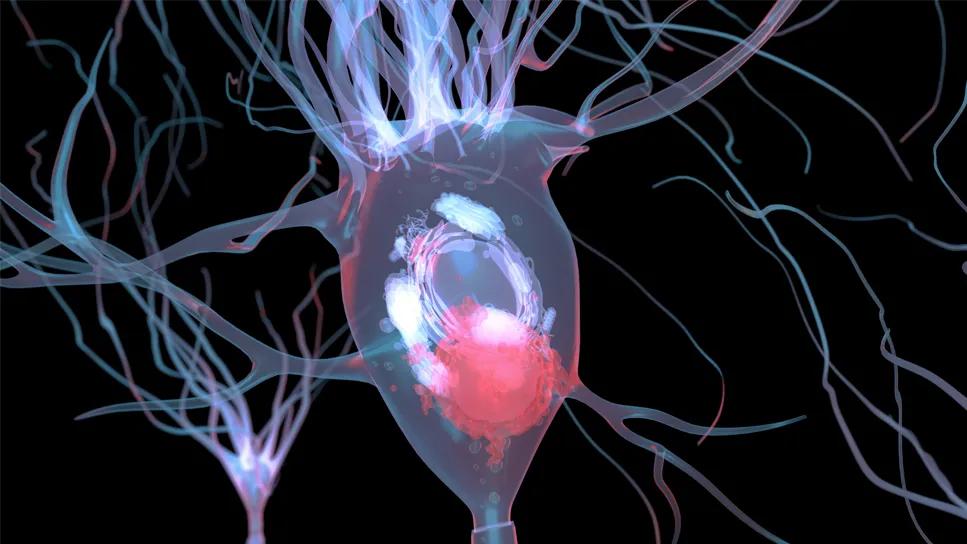Recognizing this association aids risk assessment before starting novel immunotherapies

Lewy body pathology (LBP) in association with Alzheimer’s disease (AD) greatly increases the risk for the presence of cerebral amyloid angiopathy (CAA), with isolated LBP raising the risk only moderately. APOE ε4 status also increases the likelihood of CAA, regardless of whether a patient has isolated LBP, AD or a mixed AD-LBP pathology.
Advertisement
Cleveland Clinic is a non-profit academic medical center. Advertising on our site helps support our mission. We do not endorse non-Cleveland Clinic products or services. Policy
The association of CAA with these and other clinical and neuropathologic features of AD and Lewy body dementia was characterized in a retrospective, autopsy-confirmed study of more than 2,300 patients with either AD, LBP or mixed AD-LBP. The results were recently reported in Alzheimer’s & Dementia. Identifying risk factors for CAA is important for assessing patient candidacy for anti-amyloid therapy for AD.
“We noted a strong association of Lewy body pathology with CAA,” says the study’s lead and corresponding author, Jagan Pillai, MD, PhD, a staff neurologist with Cleveland Clinic Lou Ruvo Center for Brain Health in Cleveland. “This provides further clues about underlying pathologic processes and should be considered when assessing a patient for immunotherapy for dementia.”
Amyloid-related imaging abnormalities (ARIAs), seen by MRI, are an indicator of increased risk of intracerebral hemorrhage and stroke in patients taking an anti-amyloid monoclonal antibody therapy for early AD. The presence of CAA is associated with amyloid deposits in cerebral blood vessels and is a known factor for assessing risk of ARIA development. However, methods for assessing CAA in living patients are still evolving.
This study was designed to evaluate various clinical and neuropathologic factors in patients with AD, Lewy body dementia or mixed dementias for their likelihood of association with CAA at autopsy. Identifying such risk factors may assist in determining candidacy for anti-amyloid therapy.
Advertisement
Data were drawn from the National Alzheimer’s Coordinating Center between 2005 and 2019, including patients from 37 centers in the U.S. The 2,384 patients analyzed were categorized as having neuropathology-confirmed AD (n = 1,175), LBP (n = 316) or mixed pathologies of AD-LBP (n = 893). The mean interval from initial visit to autopsy was 5.5 years.
Clinical factors assessed included age, sex, race, APOE ε4 gene carrier status and dementia severity; neuropathologic factors included Braak stage (a measure of distribution and severity of neurofibrillary tangles), neuritic plaque score and TDP-43 pathology (a DNA binding protein that accumulates in the limbic system, associated with a syndrome clinically indistinguishable from AD).
Key findings included the following:
“This study reveals the importance of considering Lewy body pathology when assessing AD patients for immunotherapy,” Dr. Pillai concludes. “Commonly tested biomarkers of AD do not enable the clinician to rule out co-pathologies that increase risk for CAA.”
Advertisement
When assessing a patient for anti-amyloid therapy, he urges clinicians to consider whether Lewy body dementia may be present by testing for alpha-synuclein in cerebrospinal fluid. This could be important in younger patients with dementia, when typical clinical symptoms of underlying LBP may not yet have been clearly noted. APOE ε4 testing should also be part of risk assessment.
Dr. Pillai adds that the study findings provide clues to the roles of underlying neuropathological mechanisms of AD, including interaction of CAA with neurofibrillary tangles and neuritic plaques, but much more research is needed. The picture is revealed to be even more complex with pathologies, such as TDP-43, which could not be adequately evaluated, as data were not available for enough of the cohort.
“Different pathologies appear to be interacting in complex ways,” he says. “Is there another common component triggering the various processes? More research is needed to further clarify the underlying mechanisms of dementia so that more targeted treatments can be developed and therapies are safe for our patients.”
Advertisement
Advertisement

Large NIH-funded investigation is exploring this understudied phenomenon

Observational evidence of neuroprotection with GLP-1 receptor agonists and SGLT-2 inhibitors

Genomic study lays groundwork for insights into potential biomarkers and therapeutic strategies

Proteins related to altered immune response are potential biomarkers of the rare AD variant

Alzheimer’s studies delve into sex-related variances in the expression of the disease

Validated scale provides a method for understanding how lifestyle may protect against Alzheimer's

Collaborative approach may reduce distress caused by neuropsychiatric symptoms

Guidance on patient selection, safety surveillance, choosing among agents and more